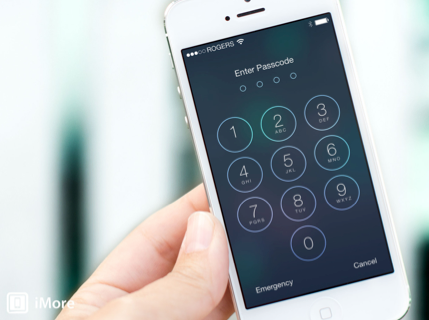Who Has Access to Your Digital ID?
Who Has Access to Your Digital ID?
Locking Down Your Mobile Device
One third of smartphone users in the U.S. do not use password protection on their mobile phones, in spite of the fact that personal information is stored on our smartphones, and that the risks associated with the use of such phones are the equivalent of the risks associated with using a computer. Smartphone theft is on the rise, and creating a password to unlock your phone may deter amateur thieves, and in any event, will protect the data if the device should the device be lost or stolen.
The level of security set on a phone is up to the individual; there is often a tradeoff between safety and convenience.
Apple devices
Turning on passcode lock for an Apple device automatically enables hardware encryption. The strength of your password matters. If you use a simple passcode of 0000, 2580, 1111, or 1234 you may as well turn the feature off; these are some of the most common and easily guessed passcodes in use today. To set up a simple passcode, go to: Settings > General > Passcode Lock > Passcode On > change -simple passcode- to On.
There is also an option to set a complex passcode for iPhones. Changing from a simple passcode to the complex passcode option will boost your security by increasing the total possible combinations that a thief or hacker would have to try in order to break into your phone.
To set up an alphanumeric password, go to: Settings > General > Passcode Lock > Passcode On. Change the -simple passcode- option to -OFF-. This will enable the complex passcode option.
There is also an option to have your phone delete all its content if the password is entered incorrectly 10 times in a row. To enable this feature, go to: Settings > General > Passcode Lock. Scroll down and turn on -erase data-. Note that once your phone is erased, you-ll no longer be able to use Find My Phone to track its location.
Android devices
There are several options for creating a lock screen on an Android device. To enable the lock screen, go to: Settings > Personal > Security > Screen lock. This will allow you to choose the kind of screen lock.
If you do want to use a lock screen, you can choose a variety of different ways of unlocking your device:
- Slide: Slide your finger over an icon on the lock screen to unlock your device. This method provides no additional security - it just prevents your device from becoming accidentally unlocked if it-s in your pocket or bag and the power button is accidentally pressed.
- Face Unlock: Face Unlock uses your device-s camera to take a picture of your face. You-ll then need to look at your device to log in. Google notes that Face Unlock is less secure than patterns, PINs, and passwords - someone could theoretically log in with a picture of you. It also doesn-t work perfectly, and may not recognize you or may recognize other people as you. This may be fun to play with, but don-t rely on it for security.
- Pattern: Slide your finger over a grid of nine dots in a pattern to unlock. It-s a convenient, fast way to unlock, but it doesn-t provide the most security. The pattern may be easy to guess by the residue of oil your finger leaves over the screen as you repeatedly slide it in that direction, and someone can easily see the pattern if they-re looking over your shoulder. It also provides many fewer combinations. For example, if you start at the top-right corner, the next dot you touch must be an adjacent dot. This narrows down the possible options and makes a pattern easier to guess than a PIN.
- PIN: Create a numerical PIN code to unlock your device. The PIN must be at least four characters long, but can be longer. A PIN is like a password, but can only use numbers.
- Password: You can use a password that can incorporate letters, numbers, and special characters. It must be at least four characters long, but can be longer. Most users won-t want to use a password, as it-s the most inconvenient way to unlock your device. However, if you-re worried about a business device with very sensitive data being accessed, using a password may be ideal.
Regardless of your level of security, avoid keeping too much personal information on your phone and disconnect from public networks whenever possible. While security sometimes creates a small inconvenience, losing the personal information on your phone can have dire consequences.
